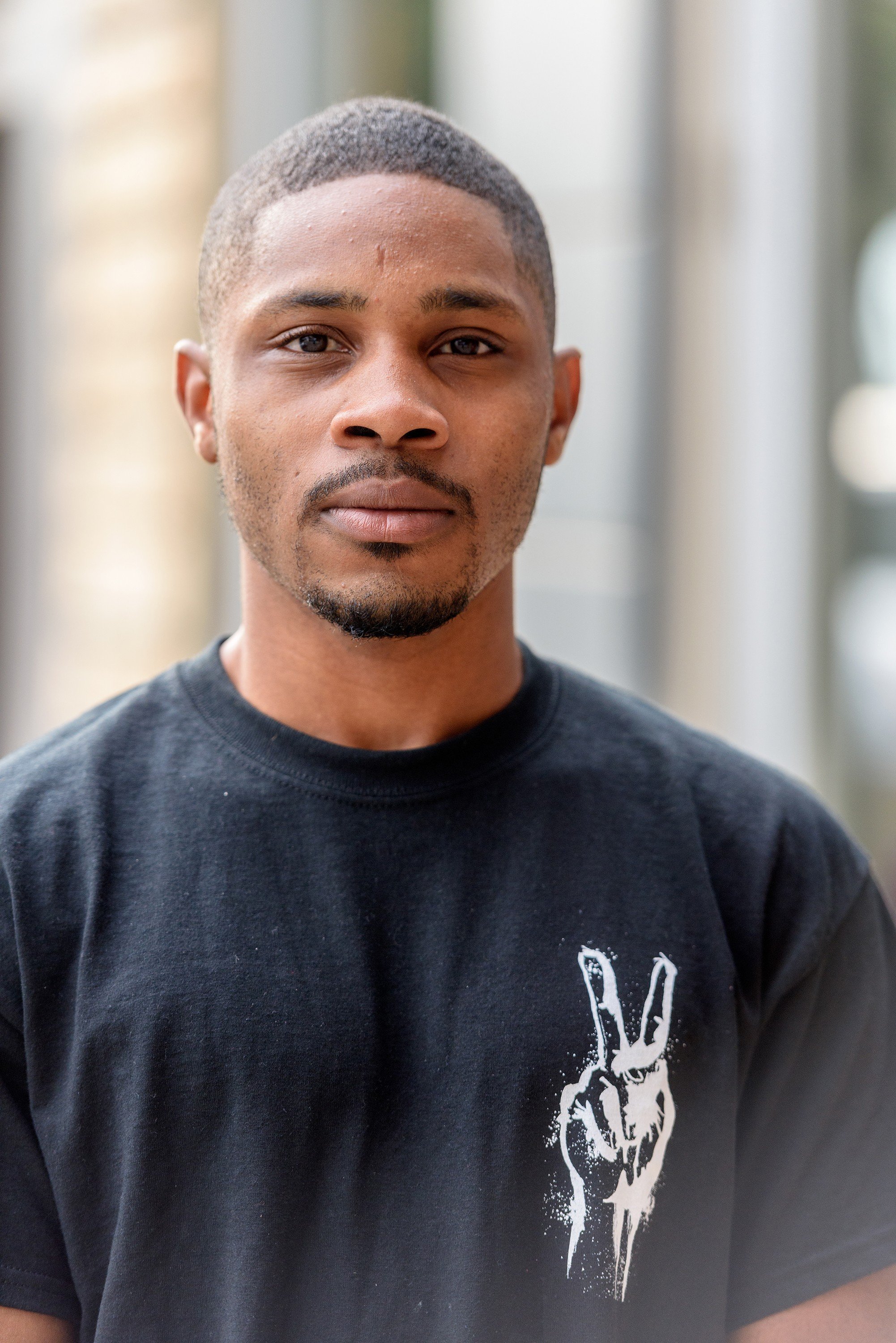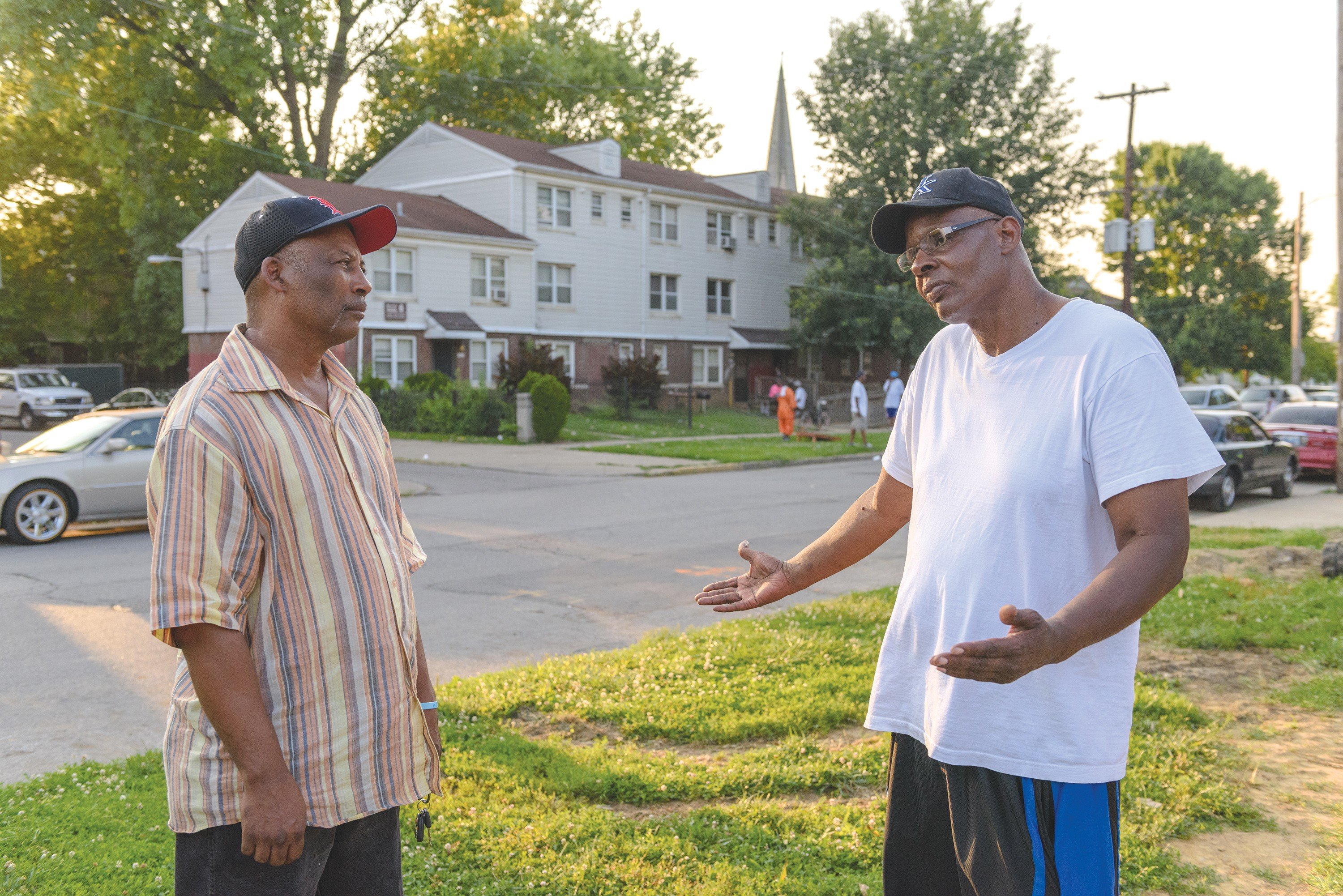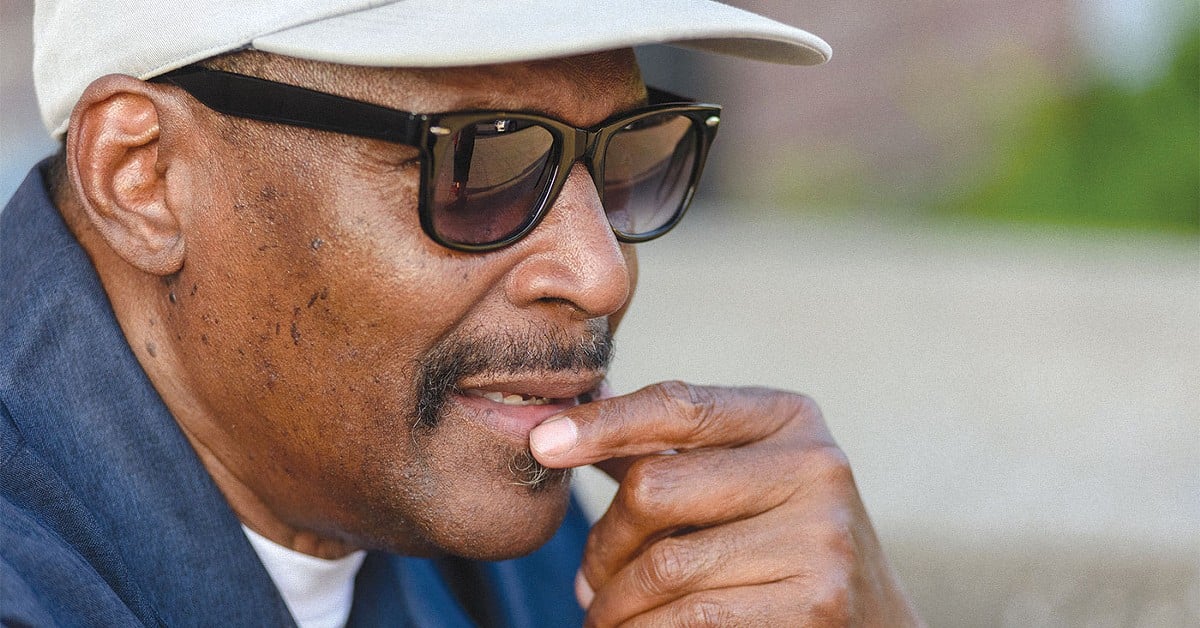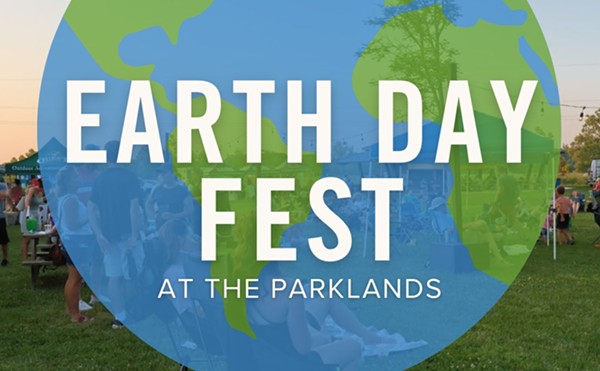This is the second in an occasional series of stories about Louisville’s youth violence problem and the record homicide rate, examining their causes and the ways in which the city and community are fighting for peace.
Darin Ware grew up around gangsters. His uncle led an ‘80s-era crew, the Chilly Boyz, and other family had gang connections. One of his earliest memories is of bullets flying around the room where he slept. As he got older, Ware resisted joining a gang because he knew what to expect. But by middle school he belonged to YNO, or Young N’ Off That, known for drug trafficking and causing trouble.
Like many kids in gangs, Ware was looking for respect and support he wasn’t getting elsewhere.
“They don’t get love from their families, so they go into the streets where they were raised and get love from their so-called brothers. But deep inside you know that they will leave you in the dark, so they can get to the light,” said Ware, now 22 and working with the conflict resolution program No More Red Dots to quell some of the violence in the streets.
His former gang’s territory starts at 35th Street and Broadway and only comprises a few blocks to about 38th Street. YNO made news in 2014 after a leaked email from the FBI identified it as having provoked a melee in Waterfront Park.
YNO is also one of several known gangs that have carved up parts of the city, forming the secret geography of Louisville. In 2016, police estimated there were 25 active gangs in the city. Eddie Woods, the director of No More Red Dots and the family advocate for Neighborhood House, knows the boundaries and borders that these gangs claim. He works with kids to get them out of gangs, and to quell violence on the streets. He was responsible for convincing Ware to leave his gang, one of many kids like him through the years. Area gangs, Woods said, have split the streets of Louisville into zones of influence, and much of the violence comes from people being where they are not supposed to go, or one group trying to take territory from another.
“It use to be about blocks, but now you’re mostly talking about block points. Like Beecher Terrace is a whole block point. Cecil and Greenwood [avenues] is a block point as intersecting streets. The same thing at 32nd and Greenwood [streets]. This is where they hang out. You can get drug buys almost on any street anymore, but everything fans out from these block points” Woods said.
Photographer Brian Bohannon and I had been following Woods for nearly six months as we tried to understand the cause of record violence in the city. We had talked to politicians, law enforcement officials and the families of murder victims. For LEO, Woods agreed to open another window on the problem by taking on another role — tour guide. We spent a day with him mapping out this gang geography, the boundary lines that separate their territories.
For me, personally, my time with Woods and Ware changed my perspective on places that I have frequented most of my life. And I have never shopped at the Kroger grocery on 28th Street and wondered if the area belonged to the CNG or YNO gangs. I would never think about whether I was wearing an appropriate color. But, sadly, these are the rituals that gang members must think about every day.
Our tour stuck to downtown and West Louisville mostly, because that is where Woods works, but he stressed that gang activity is all over Jefferson County, since most gangs really are drug trafficking networks. He said gangs are just more apparent in distressed neighborhoods.

Homicide, drugs
Jefferson County logged a record number of homicides in 2016 — 124. Much of the blame has fallen on gang activity and drug trafficking, especially of heroin.It is impossible to know the extent of Louisville’s gang problem because the gangs’ alliances are fluid, according to FBI Agent M.D. Habich, an agency spokesman.
“Gangs can form and dissolve quickly based upon the incarceration or death of gang members,” Habich said. “We also see gangs merge with rivals, or splinter from their original sects. We concentrate our efforts on the most-violent gangs. Nearly all gangs we investigate are involved in drug trafficking, predominately the trafficking of heroin.”
In January, Louisville police joined with the FBI, U.S. Attorney’s Office and U.S. Drug Enforcement Administration to arrest violent offenders and drug traffickers. It made 82 arrests in the first 10 days.
But some, including Ware believe the task force will not undo the city’s gang culture.
“In certain areas, the police are showing effort to help. But the kids don’t really have a reason to put the guns down. They don’t see any other opportunities. The police can’t stop the war. They can just maintain it, but there is no way for them to stop what is really going down in the streets,” said Ware.
Woods said the allure of quick money is undeniable.
“Trafficking in heroin is making ghetto millionaires on a weekly basis. So, they fight for territory. A significant amount of the struggle is being coordinated by people outside the city,” he said.
CNG, 4100
Our first stop with Woods was the corner of 32nd Street and Greenwood Avenue. He has a lot of history with this intersection. In 2014, his car was damaged in the crossfire between CNG, named for the nearby intersection of Cecil and Greenwood avenues, and a rival gang, 4100, which claims territory on the opposite side of Broadway.“They had gotten into a shoot-out the Sunday before over here in this parking lot,” Woods recalled. “One of the kids’ mom was in the car they were shooting at. With her being in the car, they took a whole ‘nother kind of offense to that. When they saw one of the shooters going into the [Boys and Girls Club] they started firing on him. My car was just collateral damage.”
CNG illustrates what Habich said about the fluidity of gang alliances. CNG was formed out of the remains of an earlier group, Badd Newz. Badd Newz had an ongoing beef with a gang near Victory Park known as the Doom Squad. Ironically, during this period, some members of Badd Newz actually played Pee Wee league football with members of 4100, named for 41st Street, who are now CNG’s enemy.
“They [CNG and 4100] used to hang out and all that, but then they all went to different high schools. They divided up in the early 2000s. Since then, there has been a lot of mayhem, a lot of bodies,” Woods said. “I was riding with one of the leaders past a spot where someone had been shot. He asked me, ‘What happened, Mr. Eddie?’ I didn’t know what to say.”
Push, pull into gang life
There are push and pull factors responsible for the rise of gangs in Louisville. The pull is the glamour associated with gang life as portrayed in popular culture. CNG is a Bloods-affiliated gang and 4100 is down with the Crips.These two groups began in Los Angeles and first captured national attention in the movies “Colors” and “Boyz N’ Tha Hood.” In fact, in the title song to “Colors,” rapper Ice-T warned, “We gangs of L.A. will never die — just multiply.” The failure of the Reagan-era War on Drugs allowed the Crips and Bloods to evolve into sophisticated, national, criminal organizations. Although city leaders often talk about Louisville gangs as if they are a new phenomenon, Los Angeles gangs have had a foothold in the River City for decades. Back in the late ‘80s and early ‘90s, groups including the Chilly Boyz, Junior Monks and Victory Park were claiming Crips and Bloods affiliations.
Social media sites such as Facebook and Snapchat, as well as movies and hip-hop artists glorifying the gangsta image, have made it easier for these organizations to recruit potential soldiers. Said Habich, “Gang life may appear more glamorous and exciting; it may be the only outlet for economic opportunity for some as well as a chance to establish a reputation and gain respect. We see this play out often on social media.”
Economic factors provide the push toward gang life. Young people, especially middle-school age, are attractive for drug traffickers to recruit because they are easy to control and receive relatively light sentences if arrested. And there are a lot of potential recruits. About 260,000 children in Kentucky live in poverty, with more than 40,000 in Louisville alone, according to the 2016 Kids Count Report from the Annie E. Casey Foundation and Kentucky Youth Advocates.
Woods said some groups that law enforcement classify as gangs really are nothing but young kids being told what to do by older teens or adults. By the time these kids are facing arrests and court cases, it might be too late to save them from the streets, especially since it is so hard to succeed in our society if you have a criminal record.
“It’s almost like a cliff. You got a bunch of kids moving toward the edge of this cliff. You know there is no happy ending for those that go over the cliff. So, you got to set up barriers way before they get to the cliff. You can’t wait until they are at the bottom somewhere and say, ‘We’ve got to save some of these kids.’ It don’t work like that,” Woods said.

YNO
A couple of years ago, Woods discovered two YNO-controlled houses near Broadway, where teenagers were living with no adult supervision. Someone had bought the houses and let the kids live there in exchange for them selling drugs. Child Protective Services got involved, but has declined to comment on the cases. Habich said YNO is known to work out of houses that look abandoned from the outside and to recruit middle-school kids as soldiers.According to a 2016 FBI email to local law enforcement that was published by local media outlets, “Prior to the official formation of YNO, current members would hang out at the roller skating rink on Manslick (Road) and rap. Over the course of the summer of 2013, some middle school-aged individuals from Chicago (names unknown) moved to Louisville and began attending Frost Middle School. It is believed that the individuals from Chicago encouraged the individuals hanging out at the roller skating rink to ‘beef up’ their efforts at becoming an actual gang.”
The Waterfront Park crime spree began with what initially was believed to have been 200 teens gathered to memorialize Me’Quale Offutt, a 14-year-old stabbed to death on a TARC bus a few weeks earlier. However, the FBI email said, the crowd actually had gathered to watch a fight between YNO and another gang, TYS, or Trill Young Savages, which had disparaged Offutt online. It is unknown if Offutt was affiliated with YNO, but gang members’ Facebook pages are filled with memorials to him.
In fact, YNO has its own Facebook group. These are kids after all.
TYS didn’t show up for the fight in Waterfront Park, and that is when trouble began, as groups roamed from the park into downtown. There were 17 crimes reported including assaults and robberies. Two arrests were made that night.
Later, with Ware’s help, Woods had set up a meeting between gang members and community leaders. Woods said the adults had difficulty understanding the gangs’ motives.
“One of the older cats asked them ‘Why did you do this? Why did you randomly beat up people?’ We’re talking a group of middle to lower high school age kids. The youngest 12 and the oldest one was 17. Their response was basically, ‘It’s fun.’ This shocked some of the people listening to these kids talk. What I think they didn’t hear is actually what needs to be replaced in some of these kid’s lives — something else to do.”
Victory Park Crips
After driving through YNO territory, Woods headed back across Broadway to meet his No More Red Dots partner Norman Martin. Along the way, he pointed to where people were killed: At a gas station, a guy known as Baby James was killed by a man after they had shaken hands. There, in an alley, two teens were killed by someone who he had earlier hired them to commit a homicide.Martin hadn’t arrived. Rather than wait, Woods wanted to head to the California neighborhood, Victory Park Crips turf. There, four African-American youths were sitting under trees in the park. They would sell drugs there all day, Woods said. Two guys were stationed at the basketball court watching for police. Victory Park is between four one-way streets [22nd, 23rd and West Kentucky streets and Greenwood Avenue], which makes it easier to keep track of cars coming and going.
In 2004, eight members of the Victory Park Crips, including its leader Kenneth “Wee Wee” Parker were indicted on multiple charges of homicide. The charges against Parker took up 28 pages. The current incarnation of the gang is no less lethal.
The police were reluctant to discuss specific gangs and their activities for this story. But the Courier-Journal reported Sept. 2 that a large portion of recent homicides were part of a feud between Victory Park Crips and the E-Block, a Bloods gang in Shelby Park and Smoketown. According to the article, the violence started this last summer when 23-year-old Jordan New was shot and killed in Shelby Park. The next day, three people were killed when someone in a car fired on a group standing on the corner of Clay and Jacob streets. The retaliation continues to this day.
“With the exception of Market Street, 23rd and Market, Victory Park is probably the single most vicious gang in town,” Woods said. “The guys on Market, they got bigger guns; they got older guys, they got a lot of AKs and AR-15s.”
A hasty retreat, no photos allowed
After Victory Park, Woods circled back to 32nd Street and Greenwood Avenue to meet his son, Darin, and Martin. Darin, 33, has worked at conflict resolution with his father since he was a child. And Martin works with Woods at Neighborhood House and is a coordinator for No More Red Dots. We caravanned in three cars toward the Beecher Terrace housing project. The gang situation is more complicated when it comes to Beecher Terrace. There are Crips and Bloods there who coexist. Many of them were relocated to Beecher Terrace when the city shut down the Cotter and Lang Homes housing developments. In 2014, the PBS documentary show “Frontline” examined Beecher Terrace in a piece called “Prison State.” The show said one in six of the residents will spend time in jail or prison, many of them juveniles. Kentucky spends $15 million a year incarcerating Beecher Terrace residents.But changes are coming for the housing project.
In December 2016, the city received a $29.5 million federal grant to revitalize the Russell neighborhood. It will replace Beecher Terrace with mixed-income housing, as was done with the former Park DuValle and Liberty Green projects.
On the way to Beecher Terrace, Woods detoured through what used to be Shepherd Square. The city had started renovating it several years ago, and many buildings are behind gates. Nevertheless, several African-American youth were on the corner. Woods said people knew they could still buy drugs there.
“It’s like those kids have no other place to go,” he said.
Finally, we arrived at Beecher Terrace. Kids were riding bikes, men were playing a lawn game across the street and people were on porches. Martin used to work at the Baxter Community Center in Beecher Terrace, so people he knew stopped to talk to him. He introduced us to a couple of men who told us stories about sons or other relatives who had been claimed by the street violence.
Our tour ended abruptly here.
Unbeknownst to Brian and me, four men in their teens to early 20s had gathered on the steps at the nearby Baxter Community Center. One exchanged words with Woods, who quickly shepherded us to the car. It turned out that they didn’t like the photographer taking pictures.
Woods said the man asked nicely for us to leave, but the guys on the steps were to make sure we did so. Woods figured something like that would happen, which is why he had called his son and Martin to accompany us.
Laughing as we sped away, he said, “You didn’t think I’d have you out here without back-up, did you?” •






